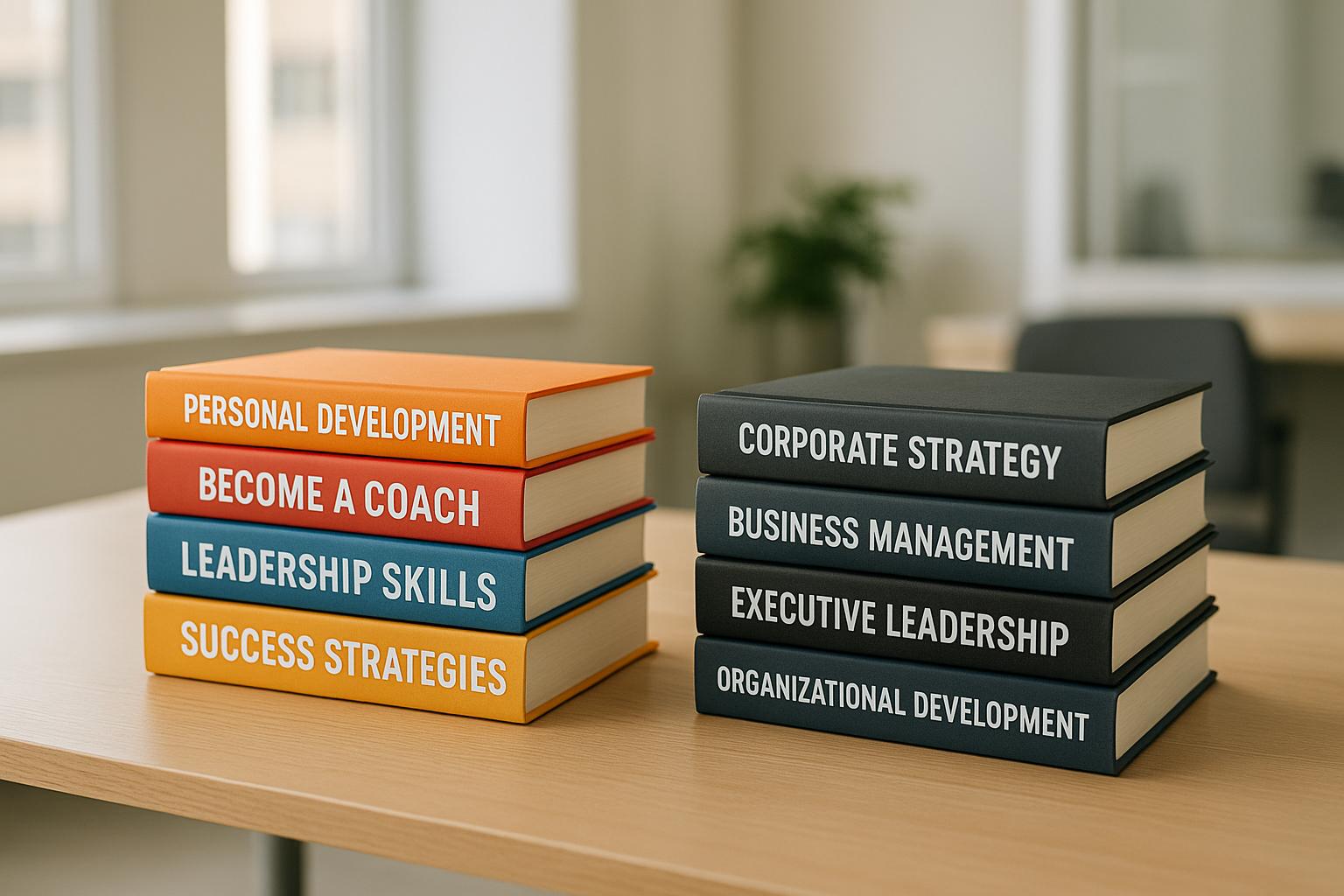Want to read more but can’t find the time? Here’s how busy executives can build a reading habit to improve leadership and decision-making skills.
- Why It Matters: Reading reduces stress by 68%, improves communication, and boosts empathy - essential leadership traits.
- Main Challenges: Packed schedules, information overload, and constant interruptions.
- Quick Solutions:
- Treat reading like a meeting - schedule it.
- Use downtime (commutes, waiting periods) for audiobooks or e-books.
- Create distraction-free reading spaces.
- Practical Tips:
- Set clear goals (e.g., 20 minutes daily, 1 book weekly).
- Use tools like book summary apps or audiobooks.
- Choose the right format: print for focus, e-books for travel, audiobooks for multitasking.
Start small. Even 15 minutes a day can make a difference. Make reading part of your daily routine to grow your knowledge and leadership skills.
Making Time to Read
Reading as a Business Investment
Reading isn't just a pastime - it's a smart move for professional growth. Timothy R. Clark, an Oxford-trained social scientist and CEO of LeaderFactor, puts it this way:
"Reading a business book is an exercise in efficiency, not literary aesthetics. You're trying to maximize the return on time invested. For the executive, time allocation is as important as capital allocation."
Think of reading time like you would any other business resource. Allocating time to read can lead to big payoffs in areas such as:
| Focus Area | Impact on Business |
|---|---|
| Knowledge Acquisition | Quicker decisions and better problem-solving |
| Skill Development | Stronger leadership and communication skills |
| Strategic Thinking | More effective planning and risk management |
| Industry Insights | Deeper understanding of markets and trends |
The key is to make reading a regular part of your routine.
Finding Time to Read
Once you see reading as an investment, the next step is to make it part of your busy schedule. Here's how executives carve out time to read:
Set reading appointments: Treat reading like a meeting - schedule it. Whether it’s 15 minutes with your coffee or 30 minutes before bed, the habit matters more than the length of time.
Use downtime wisely: Turn small pockets of unused time into reading opportunities:
| Situation | Reading Approach |
|---|---|
| Morning Commute | Listen to audiobooks while driving |
| Between Meetings | Read a few pages during short breaks |
| Traveling | Use e-books during flights |
| Waiting Periods | Read on your phone while waiting in line |
Create the right environment: Set up spaces free of distractions and keep reading materials accessible - whether at your desk, at home, or on the go.
Batch your tasks: Group similar activities like meetings into specific days, leaving other days open for focused work and reading. This helps protect your time for deeper engagement with books and ideas.
How I built a daily reading habit to read 100 BOOKS a year | 2 ...
Steps to Build a Reading Routine
For busy leaders, time is precious. Use these focused strategies to establish a reading habit that supports professional growth.
Quick Reading Methods
Make the most of your reading time by using techniques that balance speed and understanding.
Here are some methods to try:
| Technique | How It Works | Why It Helps |
|---|---|---|
| Finger Tracking | Move your finger under words as you read | Keeps your focus and speeds up reading |
| Selective Reading | Concentrate on key sections or summaries | Extracts main ideas efficiently |
| Active Engagement | Highlight or annotate important points | Strengthens retention and comprehension |
Once you improve your reading pace, set specific goals to measure your progress.
Setting Clear Reading Goals
Establish measurable targets to keep your reading habit on track.
"In my whole life, I have known no wise people (over a broad subject matter area) who didn't read all the time - none, zero. You'd be amazed at how much Warren reads - and at how much I read. My children laugh at me. They think I'm a book with a couple of legs sticking out."
Consider these types of goals:
| Goal Type | Target | How to Track |
|---|---|---|
| Daily Reading | 20-30 minutes | Use a timer or app |
| Weekly Books | 1-2 business books | Keep a digital reading log |
| Monthly Topics | Focus on one area (e.g., leadership) | Use a topic checklist |
| Annual Library | Collect 150 books | Maintain a digital inventory |
With clear goals in place, incorporate reading into your daily routine.
Reading During Daily Tasks
Fit reading into your everyday life without needing extra time.
Morning Routine Integration
Pair reading with your morning habits, like sipping your coffee, to make it an effortless part of your day.
Leverage Travel Time
Turn commutes or business trips into learning opportunities by listening to audiobooks.
Put Knowledge to Work
Apply what you’ve learned right away. Share insights with your team, integrate ideas into projects, or teach someone else.
These practical strategies allow leaders to grow their knowledge while efficiently managing their busy schedules.
sbb-itb-1ae7b2a
Books and Tools for Executives
If you're looking to strengthen your executive skills, these resources can make a real difference in your learning journey.
Top Business Books for Leaders
Some books have stood the test of time for a reason. One example is Peter Drucker's The Effective Executive, a must-read for business leaders. With a 4.6/5 rating from 3,481 reviews on Amazon, it’s clear this book resonates with many.
"The measure of the executive... is the ability to 'get the right things done.'" - Peter F. Drucker
Drucker identifies five key practices for achieving business success:
| Practice | Focus Area | Why It Matters |
|---|---|---|
| Managing Time | Daily Schedule | Helps maximize productive hours |
| Choosing Contributions | Strategic Impact | Keeps focus on high-value tasks |
| Mobilizing Strength | Team Development | Builds on collective strengths |
| Setting Priorities | Decision Making | Ensures attention to key goals |
| Effective Decision-Making | Decision Making | Leads to better outcomes |
While books like this provide a strong foundation, digital tools can help you keep up with learning on a tight schedule.
Reading Apps and Devices
Digital platforms are a practical way to make the most of limited reading time. They’re designed to fit seamlessly into busy routines.
Book Summary Services
These services break down key insights into bite-sized formats, making it easier to digest important ideas quickly:
| Feature | Benefit | User Impact |
|---|---|---|
| 15-minute Summaries | Quick knowledge intake | 95% of users read more often |
| Audio Options | Learn while multitasking | 91% build better habits |
| Expert Content | Curated insights | 87% report positive changes |
"I love being able to find relevant content and swiftly synthesize it and put it into action. The short summary format enables me to home in on the most essential, important nuggets very quickly." - Darren Raveneau, VP of L&D, Chevron Federal Credit Union
Professional Learning Platforms
These platforms offer a wide range of tools to help you stay informed and efficient:
- Access to large libraries of curated summaries
- Content available in multiple languages
- Offline reading and listening options
- Personalized recommendations tailored to your interests
Whether you’re diving into classic business books or using digital tools to stay updated, these resources can help you build a consistent and effective reading habit.
Choosing the Right Reading Format
Find the reading format that best fits your business needs. This guide helps align your reading method with your professional context and goals.
Print, Digital, or Audio: What's Best?
Each format offers unique benefits for executive learning. Here's a quick comparison:
| Format | Best For | Advantages | Drawbacks |
|---|---|---|---|
| Print Books | Deep analysis, strategic planning | No charging needed, easy note-taking, less screen time | Requires good lighting, less portable |
| E-Books | Travel, daily commutes | Adjustable fonts, built-in dictionary, portable library | Screen fatigue, battery reliance |
| Audiobooks | Multitasking, exercise | Learn on the go, engaging narration | Requires focus, limited referencing |
These formats cater to different executive tasks and time constraints.
"If you want to make the most of your time as a leader, you must learn to adjust your reading speed to the task." - Jim Schleckser, CEO of The CEO Project
When to Choose Each Format
Print Books: Ideal for situations requiring focus and detailed review:
- Reviewing legal contracts or shareholder communications
- Annotating during strategic planning sessions
- Reducing screen time after long digital meetings
E-Books: Best for convenience and quick access:
- Searching for information on the go
- Carrying multiple titles during business trips
- Adjusting font size for easier reading
Audiobooks: Perfect for making use of idle time:
- Learning while commuting
- Gaining insights during workouts
- Exploring business concepts while traveling
"Reading book summaries can provide a great alternative to reading entire books, especially when time is limited." - Avil Beckford, Musings from the Book Queen
Adjust Your Reading Speed
Tailor your reading pace to the material:
- Very Fast Reading (Skimming): Quickly extract key ideas from business books or presentations.
- Fast Reading: Scan industry reports and marketing materials for important statistics.
- Slow Reading: Use this for critical documents like contracts. Print formats work well here, allowing for easy annotation and reduced eye strain.
Environmental Considerations
While e-readers have a higher initial carbon footprint, they become more eco-friendly for frequent readers. Many executives find a hybrid approach works best, choosing formats based on the specific situation and time available.
Conclusion: Starting Your Reading Plan
Developing a reading habit can be a game-changer for busy executives looking to sharpen their leadership skills and make smarter decisions.
Next Steps for Executives
Here’s how you can turn these ideas into action:
Set Up a Reading-Friendly Environment
Create dedicated spaces for reading at both work and home. Keep a variety of materials - print, digital, and audio - easily accessible for different scenarios.
"If you want to read more, then reading has to become a priority in your life." - Sumit Kumar
Plan Reading Around Your Day
Schedule specific reading times that match your mental energy levels. Many top executives treat reading as a key part of their routine. Start with a manageable goal, like 30 pages a day, to build consistency.
| Time of Day | Reading Format | Focus Area |
|---|---|---|
| Morning (6-7 AM) | Print/Digital | Deep learning, strategy |
| Lunch Break | Print/Digital | Industry updates |
| Commute | Audio | Leadership insights |
| Evening | Reflection, planning |
Build a System That Works for You
Follow these steps to make reading a lasting habit:
-
Make Books Accessible
Keep books in multiple formats - print, e-book, and audiobook - so you’re always prepared to read. -
Link Reading to Daily Routines
Pair reading with activities you already do, like listening to audiobooks during workouts or reading after your evening planning session. -
Track Your Progress
Use apps to monitor your reading and stay accountable. Partnering with a mentor can also help keep you on track.
"In my whole life, I have known no wise people (over a broad subject matter area) who didn't read all the time - none, zero. You'd be amazed at how much Warren reads - and at how much I read. My children laugh at me. They think I'm a book with a couple of legs sticking out." - Charles T. Munger
Choose books that address your current business challenges. If a book doesn’t grab your interest within 15 minutes, move on to another. Start your reading plan today and take the first step toward better decision-making tomorrow.
FAQs
How can busy executives find time to develop a consistent reading habit?
Finding time to read as a busy executive starts with prioritizing reading and making it part of your routine. Begin by blocking out small, specific time slots in your schedule, like 15 minutes before bed or during your lunch break. Even short, consistent sessions can add up over time.
Leverage tools like audiobooks to listen while commuting or exercising, and keep an e-book or physical book handy for moments of downtime. Setting realistic goals - such as reading one chapter per week - can also help you stay motivated without feeling overwhelmed. By integrating reading into your daily life, you can build a habit that supports both personal growth and professional success.
How can busy executives benefit from using different reading formats like print, e-books, and audiobooks?
Using a mix of reading formats - print, e-books, and audiobooks - can help busy executives make the most of their limited time. Audiobooks are perfect for multitasking during commutes, workouts, or other daily activities, while e-books offer the convenience of carrying an entire library on a single device. Print books, on the other hand, can provide a more focused and tactile reading experience.
By combining these formats, executives can seamlessly integrate reading into their schedules, stay consistent, and absorb knowledge in ways that suit their lifestyle. This flexibility makes it easier to stay informed and grow professionally, even with a packed calendar.
What are the best ways to retain and apply insights from business books?
To make the most of what you read in business books, focus on three key steps: prioritize relevance, take actionable notes, and apply what you learn. Start by choosing books that address specific challenges or goals in your professional life. While reading, jot down key takeaways and ideas you can immediately put into practice.
To reinforce retention, revisit your notes regularly and discuss insights with colleagues or mentors. You can also experiment with tools like book summaries to refresh your memory and save time. By actively integrating lessons into your decision-making and daily routine, you'll turn knowledge into impactful results.


